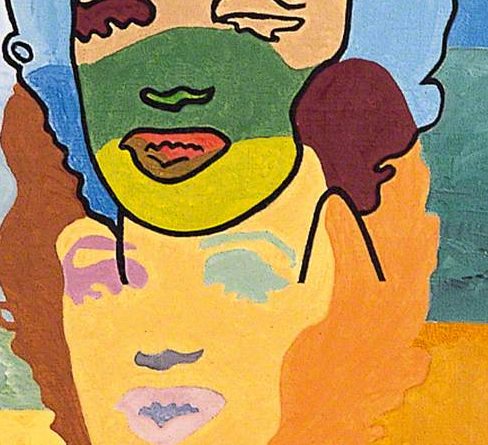A Beginner’s Guide to Pop Art: Key Artists, Iconic Works, and Vibrant Styles
Pop Art, one of the most vibrant and recognizable art movements of the 20th century, made art more accessible by using popular culture as its source of inspiration. It embraced mass media, advertising, comic books, and everyday objects to create bold and colorful works that challenged traditional fine art. This beginner’s guide will introduce you to key artists, iconic works, and styles that shaped the world of Pop Art.
1. What is Pop Art?
Pop Art emerged in the 1950s and became a major movement in the 1960s. Its goal was to blur the boundaries between high art and popular culture, celebrating consumerism, advertising, and media imagery. Pop Art broke away from traditional fine art by using images and techniques from everyday life, transforming ordinary objects into bold, eye-catching works.
2. Andy Warhol: The King of Pop Art
No discussion of Pop Art is complete without mentioning Andy Warhol. Warhol is best known for his iconic screen prints of celebrities like Marilyn Monroe and consumer products such as Campbell’s Soup cans. His work highlighted the mass production and commercialization of culture, becoming a defining symbol of the movement. Warhol’s factory-style art-making process was revolutionary and mirrored the very consumerism he critiqued.
3. Roy Lichtenstein: Master of Comic Art
Roy Lichtenstein took inspiration from comic strips, using thick black outlines, bright colors, and Ben-Day dots to mimic the appearance of printed comics. His works, such as Whaam! and Drowning Girl, reimagined popular comic imagery with a twist of irony, making everyday comic art larger than life. Lichtenstein’s use of humor and parody is what set his works apart, questioning the fine line between high and low culture.
4. The Boldness of Color and Style
Bold, vibrant colors are a hallmark of Pop Art. Artists used bright, attention-grabbing hues to reflect the mass media, consumer goods, and advertisements that inspired their work. The use of flat areas of color and simple, graphic designs gave Pop Art its iconic style. These bold visuals played a key role in making Pop Art accessible to the general public, as the imagery was familiar and easy to interpret.
5. Jasper Johns: The American Flag as Art
Jasper Johns is another pivotal figure in the Pop Art movement, known for his work featuring flags, maps, and targets. His painting Flag, which depicts the American flag in an unconventional way, challenged viewers to think about national symbols and their meaning. By taking familiar objects and reimagining them as fine art, Johns blurred the line between object and representation.
6. Pop Art’s Influence on Fashion and Design
Pop Art didn’t just influence painting and sculpture—it also made waves in fashion and design. Designers began incorporating bold colors, graphic prints, and commercial imagery into their creations. The movement’s focus on mass culture and consumer goods was reflected in everything from clothing patterns to furniture design, making Pop Art a pervasive influence in everyday life.
7. Claes Oldenburg: Sculpting Everyday Objects
Claes Oldenburg brought Pop Art into the realm of sculpture with his large-scale, soft fabric renditions of everyday objects. His works, like giant hamburgers or colossal ice cream cones, took ordinary items and transformed them into art. Oldenburg’s sculptures challenged viewers to look at everyday items in new ways, emphasizing the absurdity and humor in consumer culture.
8. The British Roots of Pop Art: Richard Hamilton
Though Pop Art is often associated with the U.S., its roots lie in Britain. Richard Hamilton’s collage Just What Is It That Makes Today’s Homes So Different, So Appealing? is one of the earliest examples of Pop Art. Hamilton’s work combined imagery from advertisements, magazines, and consumer goods, capturing the emerging consumer culture of the 1950s. His satirical approach laid the groundwork for the movement.
9. David Hockney: Personal and Playful Pop Art

David Hockney’s works are known for their personal and playful approach to Pop Art. His iconic paintings of swimming pools and California landscapes reflected the lifestyle and visual culture of the time. Hockney’s use of bright colors and simplified forms captured the essence of Pop Art, while his focus on personal experiences and everyday scenes made his work relatable and accessible.
Conclusion
Pop Art revolutionized the way we think about art, bringing everyday life into the gallery and blurring the lines between high and low culture. By exploring the works of key artists like Andy Warhol and Roy Lichtenstein, and understanding the vibrant styles and themes that defined the movement, you can gain a deeper appreciation for how Pop Art continues to shape visual culture today. Keep experimenting with bold designs and cultural references, and you’ll unlock the playful spirit of Pop Art in your own creative work









